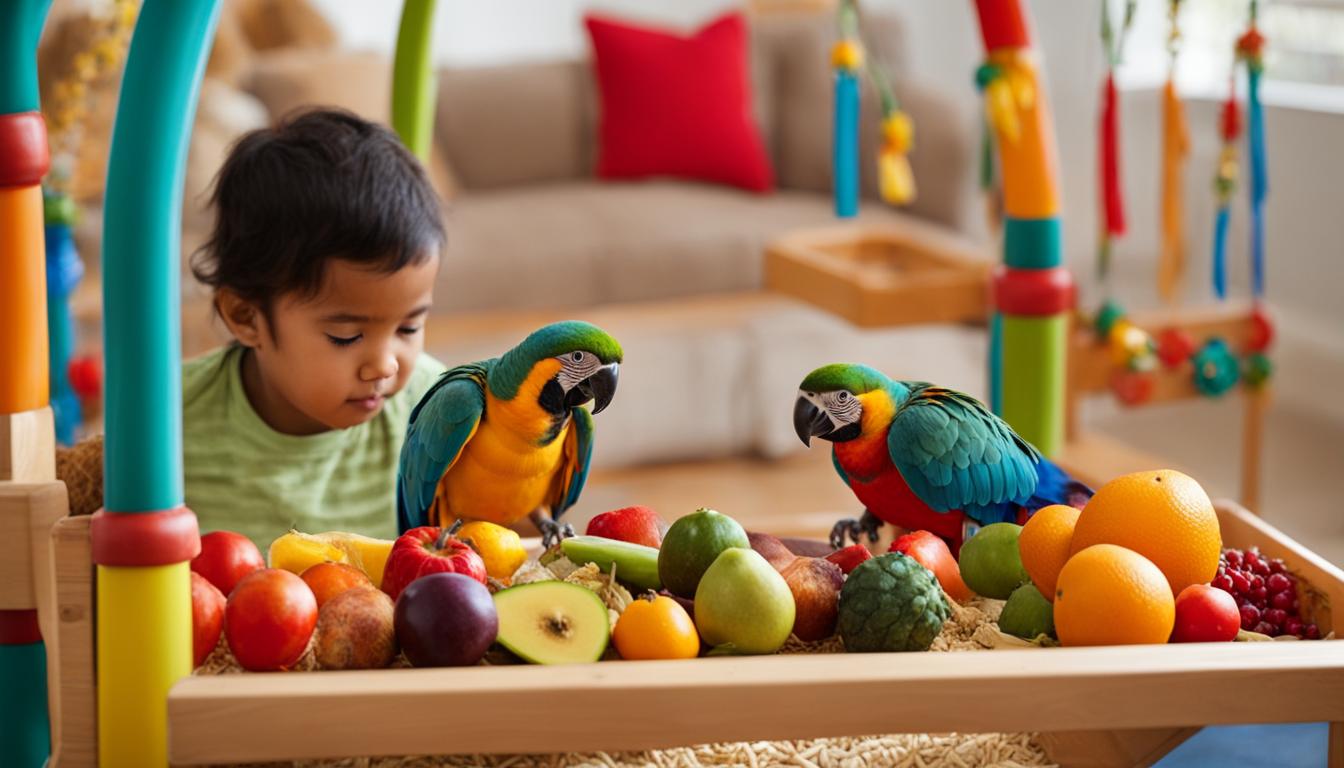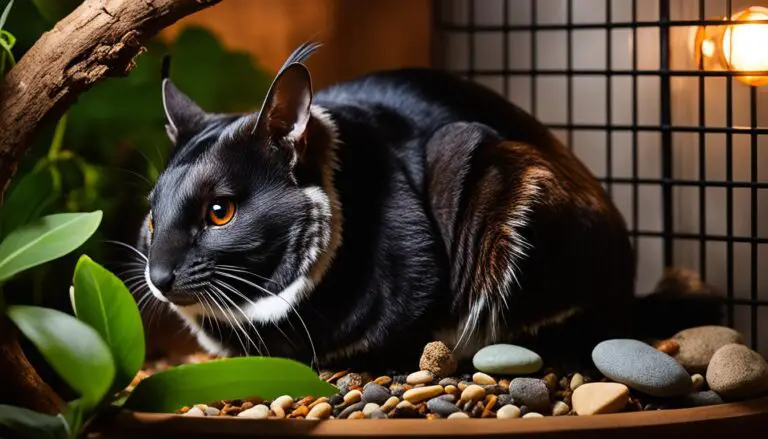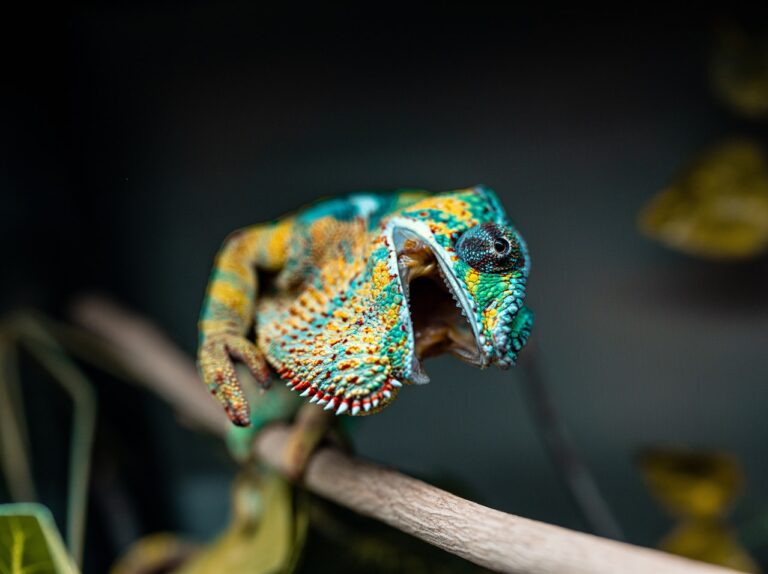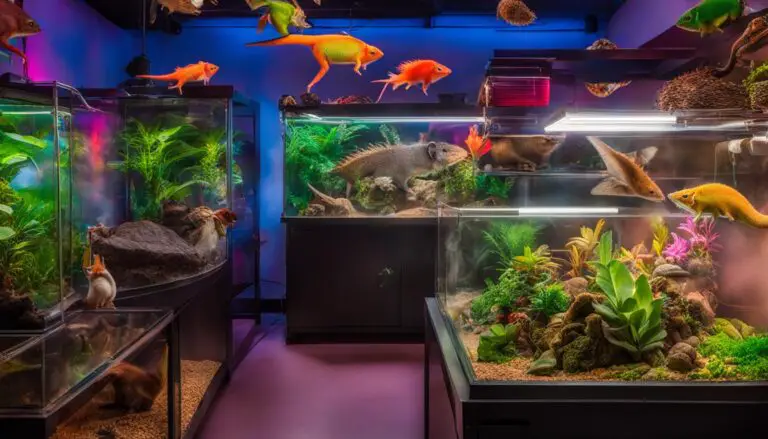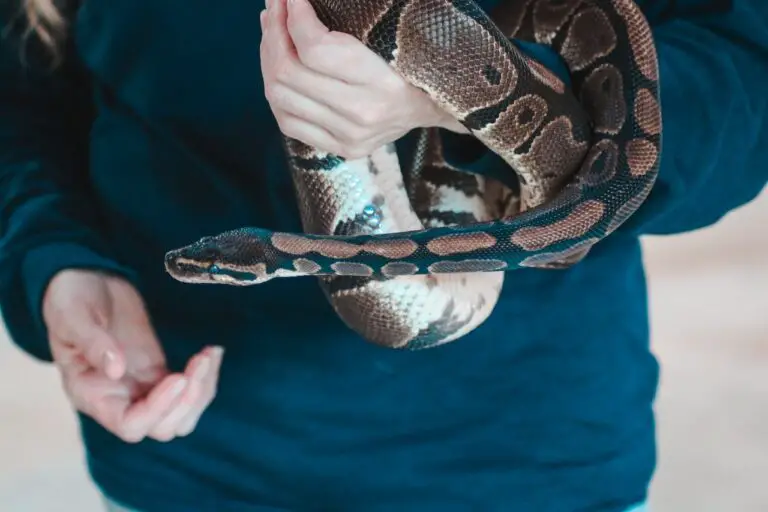Exotic Pet Care for Kids: Guide & Tips
Owning an exotic pet can be an exciting and educational experience for kids. However, it’s important to ensure the safety of both the child and the pet. This guide will provide valuable tips and advice for caring for exotic pets with children, promoting responsible pet ownership and fostering a positive and enriching environment.
Key Takeaways:
- Choosing the right exotic pet for kids requires considering factors such as temperament, care requirements, and potential health risks.
- Safety measures, including proper handling techniques, hygiene practices, and supervision, are essential when kids interact with exotic pets.
- Owning an exotic pet provides educational benefits such as learning about different species, responsibility, empathy, and a deeper understanding of the natural world.
- The introduction of an exotic pet to a child should be a carefully planned process, involving education and supervised interactions.
- Teaching children how to properly care for an exotic pet includes involvement in feeding, cleaning, habitat maintenance, veterinary check-ups, and understanding specific needs.
Choosing the Right Exotic Pet for Kids
When it comes to selecting an exotic pet for your children, it’s crucial to consider their age, level of responsibility, and the specific requirements of the pet. Various factors, including temperament, care needs, and potential health risks, need to be taken into account. While certain exotic pets might be more suitable for older kids, there are options available that can be appropriate for younger ones too. To ensure a harmonious family environment, it is vital to conduct thorough research and select a pet that aligns with your children’s capabilities, interests, and the demands of daily life.
Start by considering the temperament of different exotic animals to find a pet that will complement your children’s personalities and preferences. Some animals might be more playful and interactive, while others could be more independent and low-maintenance. Matching the needs of the pet with your children’s dispositions and energy levels will contribute to a better bonding experience and overall relationship.
“The right exotic pet can be a wonderful addition to a child’s life, offering unique learning opportunities and fostering a sense of empathy and responsibility.”
Additionally, the care requirements of exotic pets should be taken into consideration. Some species may require specialized diets, specific temperature or humidity levels, or a larger living space compared to more common household pets. By selecting a pet that fits well within your family’s dynamics and resources, you can ensure a more successful and sustainable pet ownership experience.
Exotic Pet Compatibility Chart:
| Exotic Pet | Average Lifespan | Temperament | Care Requirements |
|---|---|---|---|
| Tortoise | 50+ years | Docile, low-maintenance | Specialized diet, appropriate habitat |
| Gecko | 10-20 years | Gentle, relatively low-maintenance | Proper temperature and humidity levels, insect-based diet |
| Rabbit | 8-12 years | Playful, sociable | Proper diet, exercise, regular veterinary check-ups |
| Hedgehog | 4-6 years | Nocturnal, solitary | Appropriate housing, specialized diet |
It is important to note that the responsibility of caring for an exotic pet should not solely fall on the shoulders of children. Adult supervision and involvement are essential in ensuring the well-being and safety of both the pet and the child. By working together as a family, you can create a nurturing environment where children learn valuable life lessons through their interactions with their exotic pets.
Safety Measures for Kids and Exotic Pets
Ensuring the safety of both children and the exotic pet is paramount. Proper handling techniques should be taught to children to prevent any harm or injury. Additionally, hygiene practices such as handwashing after handling the pet are essential. Choosing a pet with a gentle temperament and low risk of transmitting diseases is also important. Supervision during interactions between children and the pet is necessary to ensure both parties are safe and comfortable.
When it comes to exotic pet care for kids, safety should always be the top priority. Here are some important safety measures to keep in mind:
- Proper Handling: Teach children how to handle exotic pets safely and gently. Emphasize the importance of using proper techniques and respecting the animal’s boundaries. This helps prevent any injuries to both the child and the pet.
- Hygiene Practices: Encourage children to wash their hands thoroughly with soap and water after handling the exotic pet. This helps minimize the risk of any potential diseases or infections.
- Gentle Tempered Pets: Consider choosing an exotic pet with a gentle temperament, especially when kids are involved. This reduces the likelihood of any aggressive behavior that could lead to accidents or incidents.
- Supervision: Always supervise interactions between children and exotic pets, especially younger children. This ensures that both the child and the pet are safe and that boundaries are respected.
Caring for exotic pets can be a wonderful experience for kids, but it’s essential to prioritize safety at all times. By following these safety measures, you can create a safe and enjoyable environment for both your child and their exotic pet.
Quote:
“Teaching children proper handling techniques and emphasizing hygiene practices are key factors in ensuring the safety of both kids and exotic pets.” – Dr. Emily Thompson, Veterinarian

Educational Benefits of Exotic Pets for Kids
Owning an exotic pet can be an exciting and enriching experience for children. Not only do these unique creatures captivate their curiosity, but they also offer countless educational benefits. Let’s explore how having an exotic pet can provide valuable learning opportunities for kids.
Learning about Different Species
Exotic pets expose children to a diverse range of species from around the world. Whether it’s a colorful reptile, an exotic bird, or a fascinating amphibian, each pet comes with its own characteristics and care requirements. By engaging with these animals, children develop a deep understanding of the natural world and the importance of biodiversity.
Understanding Habitats and Behaviors
Caring for an exotic pet goes beyond the surface level. It involves learning about their native habitats, the unique behaviors they exhibit, and how to replicate optimal living conditions. Children gain knowledge about temperature needs, humidity levels, and proper enclosure setups, which promote responsible pet ownership and environmental consciousness.
Teaching Responsibility, Empathy, and Compassion
Exotic pets present an opportunity for children to learn valuable life skills. Taking on the responsibility of feeding, cleaning, and maintaining a pet’s habitat helps kids develop a sense of accountability. This hands-on approach encourages empathy and compassion towards their pets, as they recognize the importance of meeting their needs and ensuring their well-being.
Sparking Curiosity and Critical Thinking
Exotic pets ignite curiosity and encourage children to seek knowledge. They may wonder about the pet’s unique features, behaviors, or even their place in their natural habitat. This curiosity promotes independent thinking and a drive to explore further, fostering a love for learning and expanding their intellectual horizons.
Companionship and Emotional Development
Exotic pets can become beloved companions for children, providing emotional support and a source of unconditional love. Owning an exotic pet helps kids develop nurturing skills and create strong bonds based on trust and mutual respect. These relationships can positively impact a child’s emotional well-being, teaching them valuable lessons about companionship and empathy.
With their captivating nature and educational potential, exotic pets can play a significant role in shaping a child’s understanding of the natural world. They foster a sense of responsibility, empathy, and curiosity, while also promoting a deeper connection with animals and their habitats.
Introducing Exotic Pets to Children
Introducing an exotic pet to a child should be a carefully planned process. Education about the specific type of animal, its needs, and proper handling should be provided beforehand. Initial interactions between the child and the pet should be supervised, with gradual and increasing exposure as both parties become more comfortable. This allows for a positive and smooth transition, promoting a strong bond between the child and the pet.
Preparing for the Introduction
Before introducing an exotic pet to a child, it is essential to provide them with the necessary knowledge and understanding of the animal. Educate them about the species, its characteristics, behavior, and specific care requirements. Use interactive materials and engage them in age-appropriate discussions to spark their curiosity and interest in the exotic pet.

Supervised Interactions
It is crucial to supervise the initial interactions between the child and the exotic pet. Start with short periods of supervised exposure to create familiarity and comfort. Teach the child how to approach the pet gently and respectfully, emphasizing the importance of careful handling. Supervision ensures the safety of both the child and the pet and allows for immediate intervention if necessary.
Gradual Exposure and Acclimation
As the child and the exotic pet start to build a bond, gradually increase their interactions. This can include supervised playtime, feeding sessions, or simple activities that promote positive association. Monitor their interactions closely to ensure the well-being of both parties and adjust the level of exposure based on their comfort levels.
“Introducing children to exotic pets provides an opportunity to foster empathy, responsibility, and a deeper appreciation for the natural world. It’s crucial to approach the process with patience, education, and gradual exposure, allowing for a strong and positive bond to form.”
– Dr. Emily Thompson, Child Psychologist
Building a Strong Bond
Encourage the child to actively participate in the care of the exotic pet. By involving them in feeding, grooming, and maintaining the pet’s habitat, they develop a sense of responsibility and ownership. This involvement helps foster a strong bond between the child and the pet, creating a nurturing and loving relationship.
| Benefits of Introducing Exotic Pets to Children |
|---|
| 1. Promotes understanding and empathy towards animals |
| 2. Enhances educational opportunities about different species |
| 3. Develops a sense of responsibility and caregiving |
| 4. Fosters curiosity and interest in the natural world |
| 5. Strengthens the bond between the child and the pet |
Introducing exotic pets to children can be a rewarding and enriching experience. By following a structured approach and providing the necessary education and supervision, children can develop a deep understanding and appreciation for these unique animals.
Exotic Pet Care Tips for Children
Teaching children how to properly care for an exotic pet is crucial for their well-being and the pet’s health. By involving kids in the daily care routine, they learn valuable skills and develop a sense of responsibility towards their furry friend.
The Importance of Involvement
When it comes to exotic pet care for kids, it’s essential to encourage their active participation. By involving children in feeding, cleaning, and maintaining the pet’s habitat, they develop a deeper bond and understanding of the pet’s needs.
- Feeding: Teach children about the proper diet for their exotic pet and involve them in the feeding process. Show them how to measure the appropriate amount of food and emphasize the importance of consistency in feeding schedules.
- Cleaning: Explain the importance of a clean living environment for the pet’s health. Teach kids how to clean the habitat, including removing waste, replacing bedding, and maintaining proper temperature and humidity levels.
- Grooming: Some exotic pets may require grooming, such as trimming nails or brushing feathers. Teach children how to handle these tasks gently and safely, ensuring the pet’s comfort.
Emphasizing Health and Hygiene
When caring for exotic pets, it’s vital to prioritize their health and hygiene. Teach children the following pet care tips:
- Regular Veterinary Check-ups: Schedule regular visits to a veterinarian who specializes in exotic pets. Teach kids the importance of routine check-ups and vaccinations to maintain their pet’s well-being.
- Hygiene Practices: Emphasize the significance of handwashing before and after handling the pet. Teach kids about zoonotic diseases and the importance of preventing the spread of germs.
- Diet: Educate children on the specific dietary needs of their exotic pet. Teach them how to provide a balanced and appropriate diet to ensure optimal nutrition.
Fostering Responsibility and Empathy
Exotic pet care for kids goes beyond daily tasks. It’s an opportunity to teach children valuable life skills and foster empathy towards animals.
When kids take care of an exotic pet, they learn about responsibility, empathy, and the importance of respecting and caring for all living creatures.
Encourage children to observe and interact with the pet, helping them develop a deeper understanding of the pet’s needs, behaviors, and emotions. Empathy towards animals nurtures compassion and kindness in children, shaping them into responsible pet owners and compassionate individuals.
Remember, caring for an exotic pet with children is an opportunity for growth, learning, and companionship. By instilling a sense of responsibility and teaching them proper care techniques, kids can create a happy and healthy environment for the exotic pet, establishing a lifelong love for animals.
Creating a Kid-Friendly Environment for Exotic Pets
Providing a kid-friendly environment is essential for the well-being and safety of both children and exotic pets. By creating a suitable habitat, allowing for supervised interactions, and engaging in enriching activities, a positive bond can be fostered between the child and the pet.
One way to ensure a kid-friendly environment is to create a habitat that meets the specific needs of the exotic pet. This includes maintaining the appropriate temperature, humidity, and providing enough space for the pet to move and explore. Researching the specific requirements of the pet and setting up the habitat accordingly is crucial for their overall well-being.
Supervised interactions between children and exotic pets are important to prevent any accidents or harm. It’s essential to teach kids proper handling techniques and explain the boundaries and rules when interacting with the pet. This ensures the safety and happiness of both the child and the pet.
Engaging activities such as feeding, grooming, and enrichment can strengthen the bond between children and exotic pets. Allowing kids to participate in the care of the pet not only promotes a sense of responsibility but also creates a deeper connection and understanding of the pet’s needs.
| Creating a Kid-Friendly Environment for Exotic Pets |
|---|
| Ensure a suitable habitat that meets the pet’s needs |
| Supervise interactions between children and pets |
| Engage in activities such as feeding, grooming, and enrichment |
Quote:
“Creating a kid-friendly environment for exotic pets is crucial for their well-being and the safety of the child. By providing an appropriate habitat and allowing for supervised interactions, a positive bond can be formed between the child and the pet.” – Dr. Emily Wilson, Veterinarian
Benefits of a Kid-Friendly Environment
- Promotes a positive bond between the child and the pet
- Enhances the pet’s well-being and overall happiness
- Teaches responsibility and empathy towards animals
- Creates a deeper understanding of the pet’s needs and behaviors
By creating a kid-friendly environment for exotic pets, children can develop a strong connection with their pets while learning about responsibility and empathy. It’s important to establish clear boundaries and provide engaging activities to ensure the safety and happiness of both the child and the pet.
Conclusion
Owning an exotic pet can be a rewarding and educational experience for kids. It offers valuable opportunities for learning, responsibility, and building companionship. By adhering to proper care guidelines, implementing safety measures, and creating a loving environment, children can thrive alongside their exotic pets, while also teaching them about empathy and respect.
When choosing an exotic pet for a child, it’s important to consider their age and capabilities. Selecting a species that is suitable for their level of responsibility ensures a positive and fulfilling experience for both the child and the pet. Additionally, prioritizing the well-being of both parties is crucial, with safety measures and supervision during interactions being paramount.
By teaching kids about exotic pets and involving them in their care, children can develop a deeper understanding of the natural world. Caring for an exotic pet encourages responsibility and empathy, while also fostering curiosity and a love for animals and the environment. It’s a wonderful opportunity to educate children about different species, habitats, behaviors, and specific care requirements.
In conclusion, exotic pet care for kids is an enriching journey that combines education, responsibility, and companionship. By following proper care guidelines, ensuring safety measures, and fostering a loving and respectful environment, children can learn and grow alongside their exotic pets. It’s an experience that not only teaches valuable life skills but also creates lasting memories and bonds between kids and their extraordinary animal companions.
Source Links
- https://exoticpetwonderland.org/2023/07/11/exotic-pets-and-child-safety/
- https://atomicmommy.net/2023/11/07/pet-guide-best-exotic-pets-for-children/
- https://www.absoluteexoticssa.co.za/animal-blog-news/general-exotic-animal-articles-exotic-pet-content/441-exotic-pets-and-children-a-comprehensive-guide
Peter Stones is the founder of Exotic Pets Place, the leading online resource for exotic pet care information.
With over 10 years of hands-on exotic pet ownership experience, he is deeply passionate about sharing his expertise to help others properly care for their unusual pets.
When he's not writing extensively researched articles or connecting with fellow exotic pet enthusiasts worldwide, you can find Peter at home tending to his own beloved menagerie of exotic animals.

